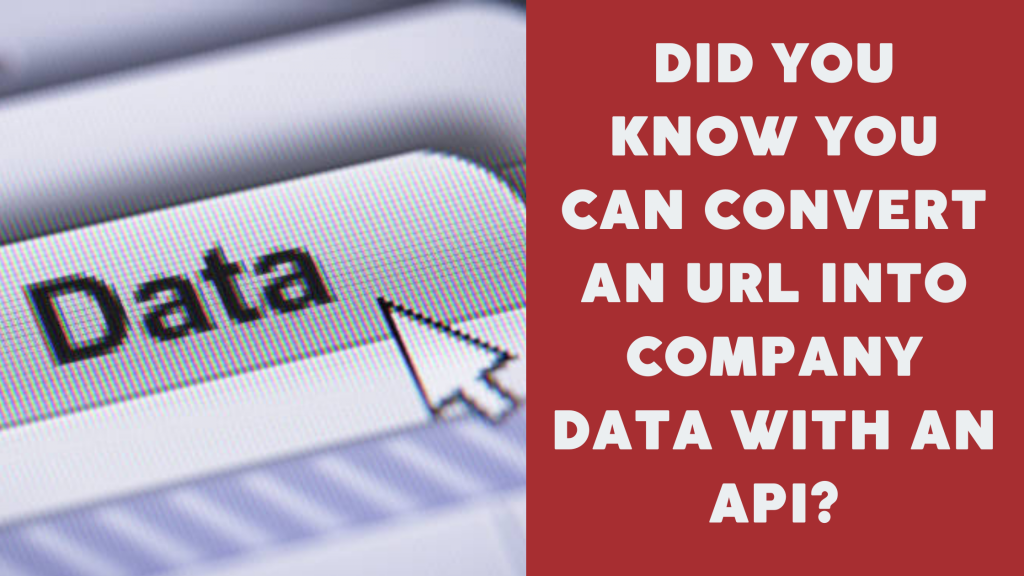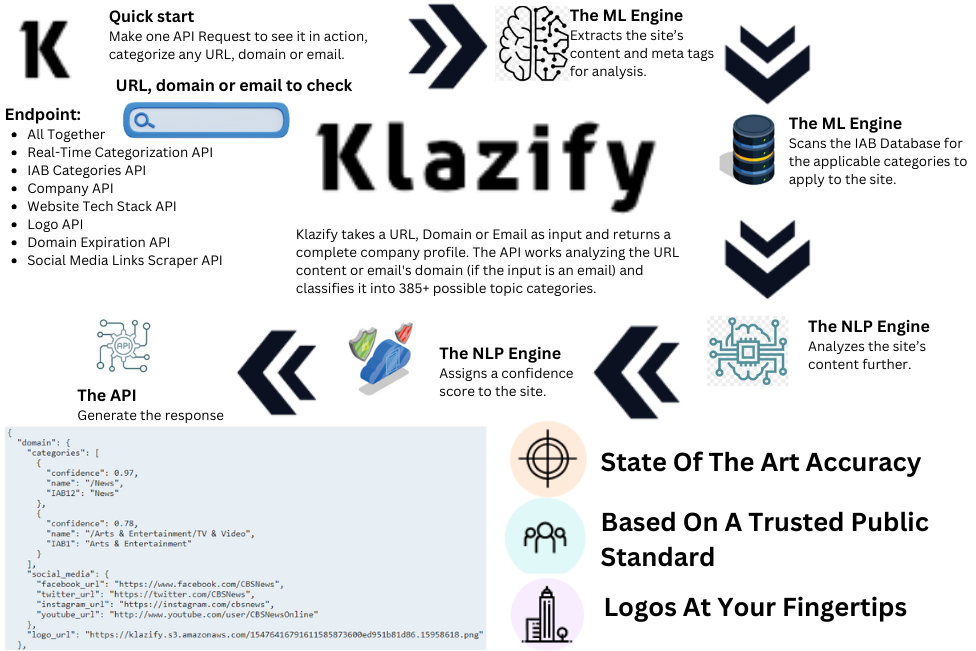In the ever-evolving landscape of technology, developers seek efficient tools to navigate the vast ocean of digital information. In this guide, we’ll delve into the intricacies of using a URL Data Extraction API with PHP. Join us on this journey to master the art of extracting valuable insights from URLs effortlessly.
Why URL Extraction APIs?
URL Data Extraction APIs automate the process of extracting specific information from web URLs, offering several benefits:
Purpose
- Content Categorization: Identify and categorize webpage content.
- Company and Brand Analysis: Extract details about companies and brands.
- Social Media Links Extraction: Retrieve links to associated social media channels.
- Logo Extraction: Extract logos for visual representation.
- Competitor Analysis: Identify competitors and similar domains.
- Parked Domain Recognition: Detect parked or for-sale domains.
- Market Research: Gather data for market analysis.
Benefits
- Automation and Efficiency: Save time and resources with automated data extraction.
- Accuracy and Precision: Ensure precise categorization and analysis.
- Real-Time Insights: Stay updated with real-time data.
- Enhanced Content Moderation: Improve user-generated content moderation.
- Flexible Integration: Easily integrate with various programming languages.
- Strategic Decision-Making: Aid in strategic decision-making and competitive intelligence.
- Cost-Effective Solutions: Provide specific data without extensive manual research.
- API Scalability: Scale API usage based on needs.
In essence, these APIs streamline data extraction, offering accurate, real-time insights for efficient decision-making and content management.
Klazify: Elevating Your Data Extraction Experience
Before we embark on the PHP adventure, let’s introduce Klazify, a game-changer in the realm of URL Data Extraction APIs. With features like brand categorization, company classification, and domain analysis, Klazify stands as a beacon of precision and efficiency. In the digital horizon, where insights drive innovation, Klazify paves the way for resilient and cutting-edge solutions.
Key Features Of Klazify API
As developers, we crave a seamless integration experience. Explore the features that set a robust URL Data Extraction API apart — accuracy, versatility, and ease of integration. Uncover the magic of categorizing companies, extracting logos, and real-time domain analysis. It’s not just about data; it’s about empowering your development journey.
How To Master URL Data Extraction With PHP
Now, let’s roll up our sleeves and delve into the practical side. Mastering URL Data Extraction with PHP is a journey that starts with Klazify. Here’s your roadmap:
Step 1: Embrace Klazify
Visit http://Klazify.com and obtain your API key by completing the signup process.
Step 2: Subscribe and Explore
After signing up, subscribe to a plan with a generous 7-day free trial. Test Klazify to ensure it aligns with your development needs.
Step 3: Retrieve Your API Access Key
Access your API Access Key from the Dashboard menu post-subscription. This key is your gateway to making queries to the API.
Step 4: Select the Endpoint
Select the “Company API” endpoint. (The API has many more endpoints you can choose from!).
Step 5: PHP Integration Magic
Now, let’s integrate Klazify with PHP using the provided code snippet.
PHP CURL
$curl = curl_init();
curl_setopt_array($curl, array(
CURLOPT_URL => "https://www.klazify.com/api/domain_company",
CURLOPT_RETURNTRANSFER => true,
CURLOPT_ENCODING => "",
CURLOPT_MAXREDIRS => 10,
CURLOPT_TIMEOUT => 30,
CURLOPT_HTTP_VERSION => CURL_HTTP_VERSION_1_1,
CURLOPT_CUSTOMREQUEST => "POST",
CURLOPT_POSTFIELDS => "{\"url\":\"https://www.google.com\"}\n",
CURLOPT_HTTPHEADER => array(
"Accept: application/json",
"Authorization: Bearer access_key",
"Content-Type: application/json",
"cache-control: no-cache"
),
));
$response = curl_exec($curl);
$err = curl_error($curl);
curl_close($curl);
if ($err) {
echo "cURL Error #:" . $err;
} else {
echo $response;
}Step 5: Replace “Bearer access_key”
In the code snippet, replace “Bearer access_key” with the API Key obtained in Step 3.
Example
- INPUT:
- URL, domain/email to check: google.com
- Endpoint: Company API
- Your API Query:
POST https://www.klazify.com/api/domain_company
? url = google.com OUTPUT:
{
"domain": {
"domain_url": "http://google.com"
},
"success": true,
"objects": {
"company": {
"name": "Google",
"city": "Mountain View",
"stateCode": "CA",
"countryCode": "US",
"employeesRange": "100K+",
"revenue": null,
"raised": null,
"tags": [
"Internet",
"Web Services & Apps",
"Technology",
"SAAS",
"B2C",
"Mobile"
]
}
}
}Conclusion: Elevate Your Development Journey
As we conclude our journey, remember, that mastering URL Data Extraction with PHP is not just about code; it’s about unlocking a world of possibilities. With Klazify as your companion, you are poised to elevate your development journey, turning data into innovation.
For more information read my blog: Domain Expiration API: Where To Find The Best Data?



